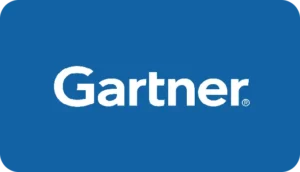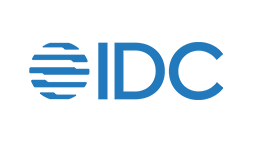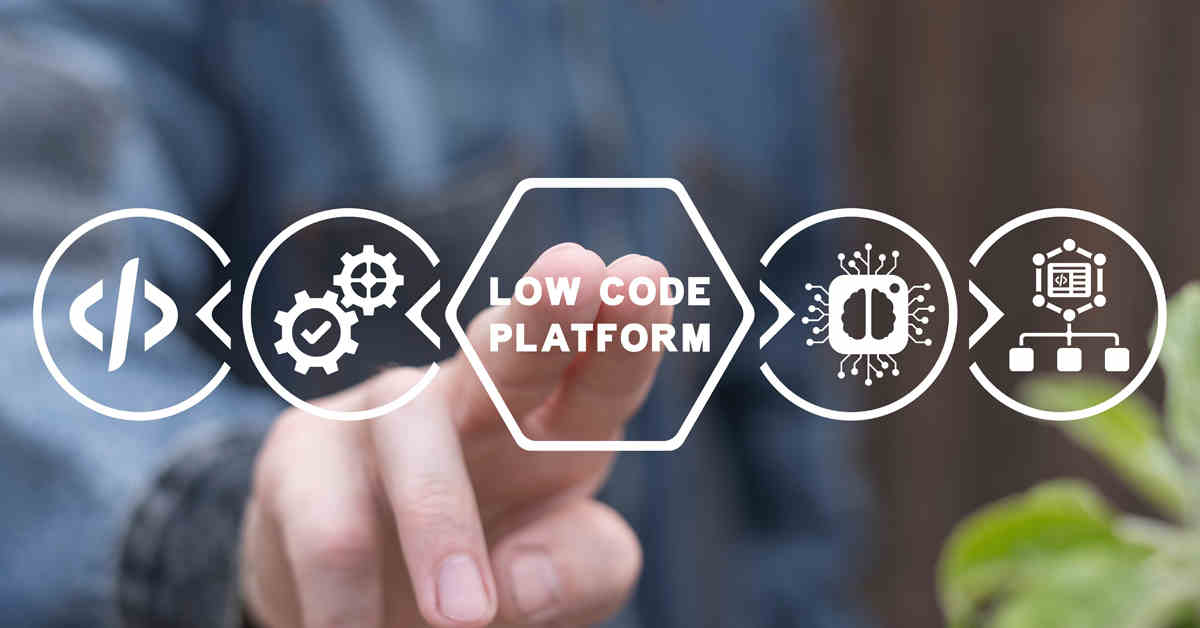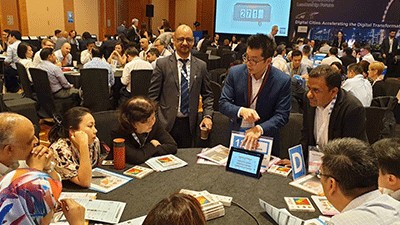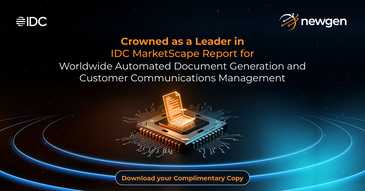Configure and run continuous integration and deployment of artifacts. Accelerate the DevOps lifecycle by streamlining application development with features, fixes, and updates. Implement changes in applications and deploy them instantly by leveraging comprehensive DevOps tools. Streamline different stages of the pipeline with a user-friendly pipeline designer and ensure real-time monitoring.
Applications are deployable on Amazon Web Services and Microsoft Azure.
DevOps Capabilities of NewgenONE Platform
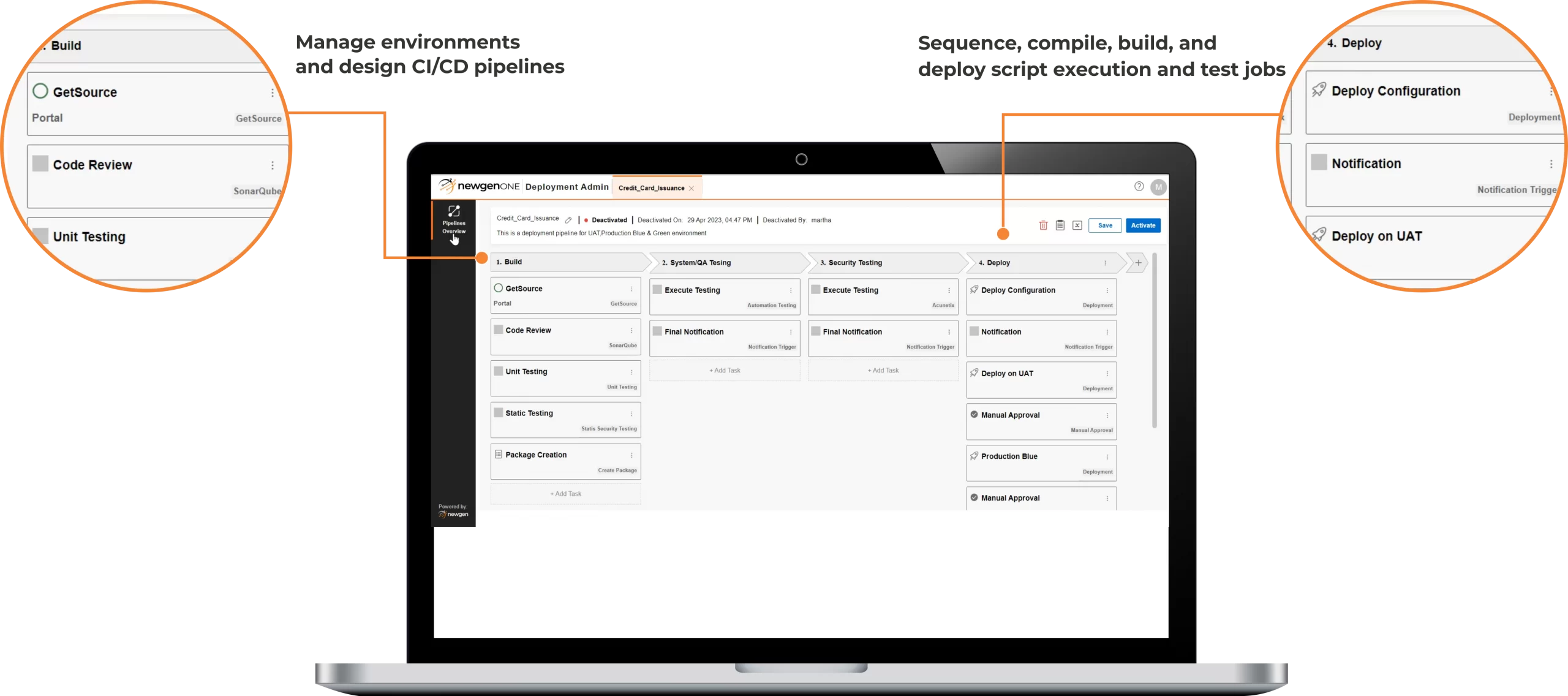
Seamless DevOps Lifecycle
Faster application deployment and superior delivery with fast code changes and automated testing for developers
Integrate AI-driven testing, validation, and verification tools at various stages of application development to detect anomalies early and enable error-free applications
Govern the pipeline execution based on user rights
Seamless orchestration of APIs, from both the platform and external sources, for streamlined development and deployment process
Simplified Application Deployment
Support for various application types, including portal, progressive web application, mobile, process, rules, reports, and others, for orchestrating complete application pipeline with AI-driven automation
User-friendly interface for system defined roles – IT admin, release managers, and DevOps engineers. Provision to define custom roles according to the organizational needs
Artifact versioning, auto-backup, and restore actions for efficient management of application deployment
Flexible Deployment Environment
Smooth on-premises, cloud-based, and hybrid deployment, giving flexibility to organizations to manage their deployment environments
AI-assisted intuitive pipeline designer for managing multiple deployment environments with real-time insights
Comprehensive Dashboard for Reporting and Analysis
AI-powered dashboards for detailed monitoring and analysis of application performance
Real-time pipeline monitoring for better visibility
Tracking of the previously executed pipelines for detailed analysis
Low-Code Application Development Capabilities of NewgenONE Platform
Lead with an Industry-recognized Platform
All you need to know about Low Code DevOps
NewgenONE facilitates the blue-green deployment model for containerized cloud deployments. It enables the operations team to run two identical production environments, where only one environment (blue) is live most of the time, whereas the other is idle (green). Once a new version of the software is available, it is moved to the green environment, and then the traffic is redirected from the blue environment to the green using the load balancer.
This capability benefits operations teams by enabling customers to switch from an old to a new version without downtime. Furthermore, it allows the blue environment to serve as a backup in case of any failure or disaster on the newly deployed green environment.
To integrate security into a DevOps workflow, you can embed security practices into each stage of the software development lifecycle. Also, use automated security testing tools and techniques, perform regular vulnerability assessments, and ensure compliance with industry security standards and regulations.
Automation plays a crucial role in DevOps by streamlining and automating manual and repetitive tasks, such as testing, building, and deployment. Also, enabling faster and more frequent releases, reducing errors and downtime, and improving the overall efficiency and quality of the software development process.
Yes. The NewgenONE Platform has a database for managing user data. It also supports a cloud-only deployment.
Common challenges of cloud deployment include data security and compliance, vendor lock-in, performance and availability, integration with existing systems, and the need for specialized skills and expertise.
To optimize cloud deployment for performance and scalability, it is important to use auto-scaling, load balancing, caching, and other optimization techniques. Monitoring and analyzing performance metrics, identifying bottlenecks, and making necessary changes are also crucial to achieve optimal performance and scalability in the cloud.
Yes, creating more staging environments for developers is possible beyond the standard provision. The platform offers flexible configuration options for multiple staging environments, facilitating seamless application development, testing, and deployment before going live on production.
Newgen’s low-code environment efficiently manages concurrent processes, allowing ongoing transactions to run on existing versions while new transactions seamlessly execute on updated versions, ensuring uninterrupted operations.





